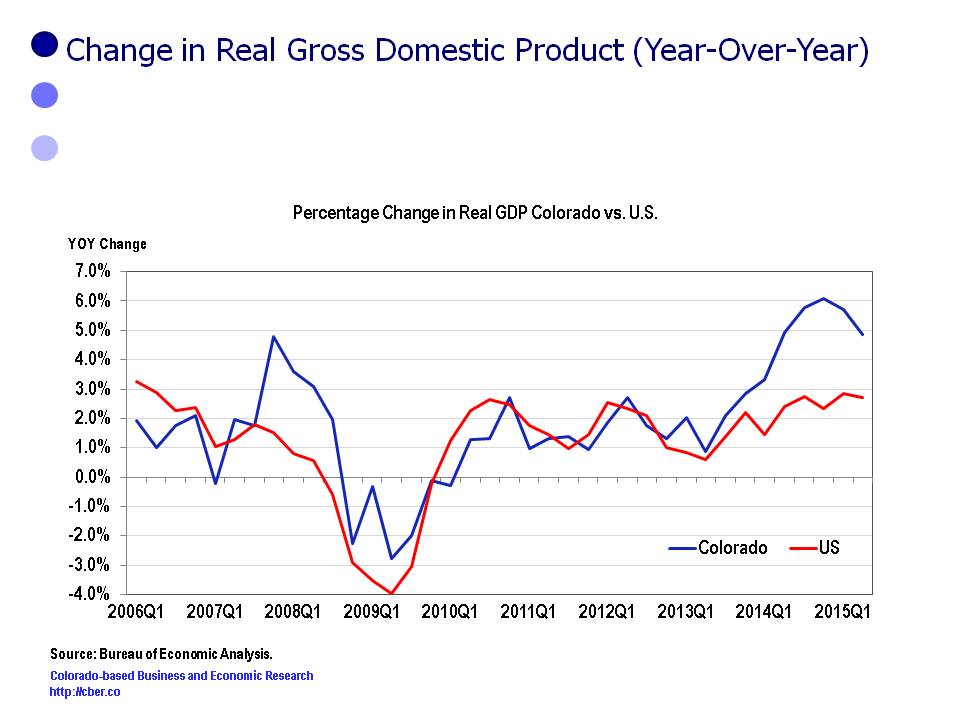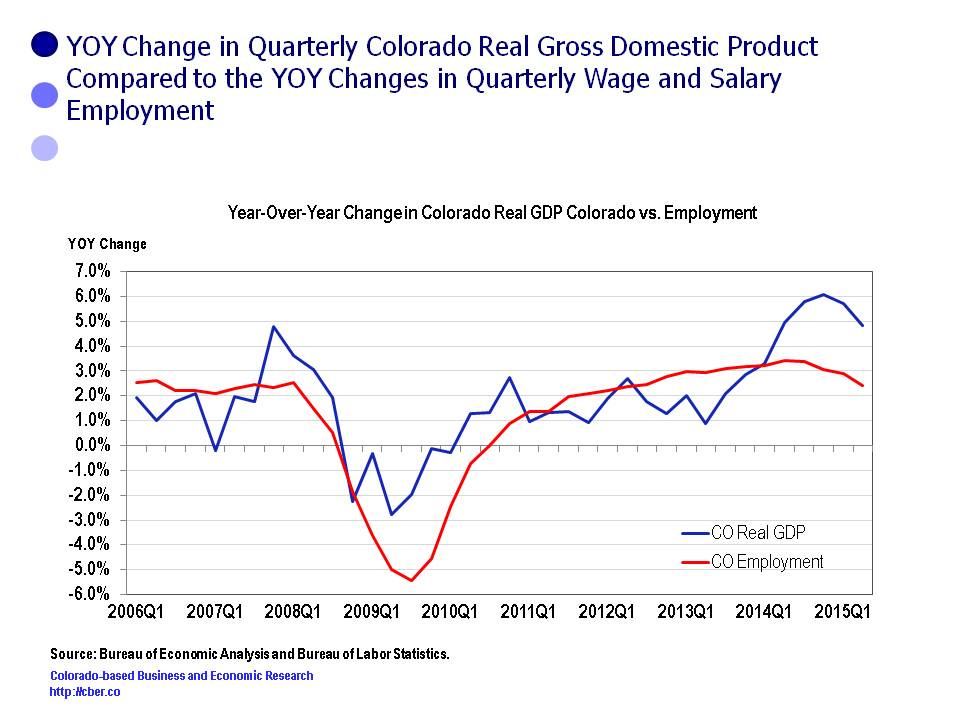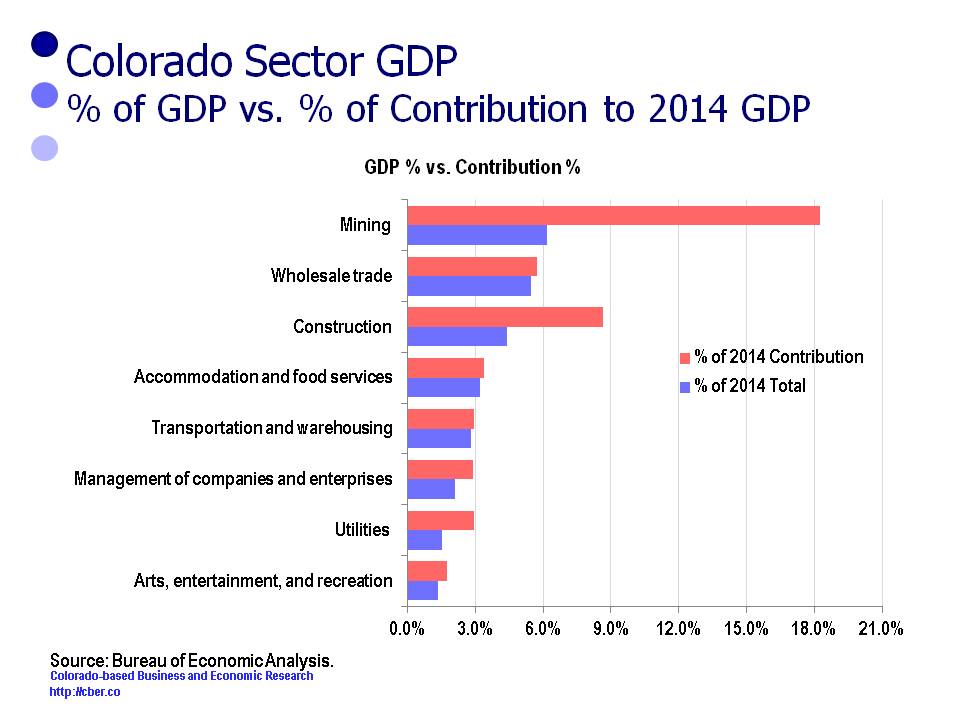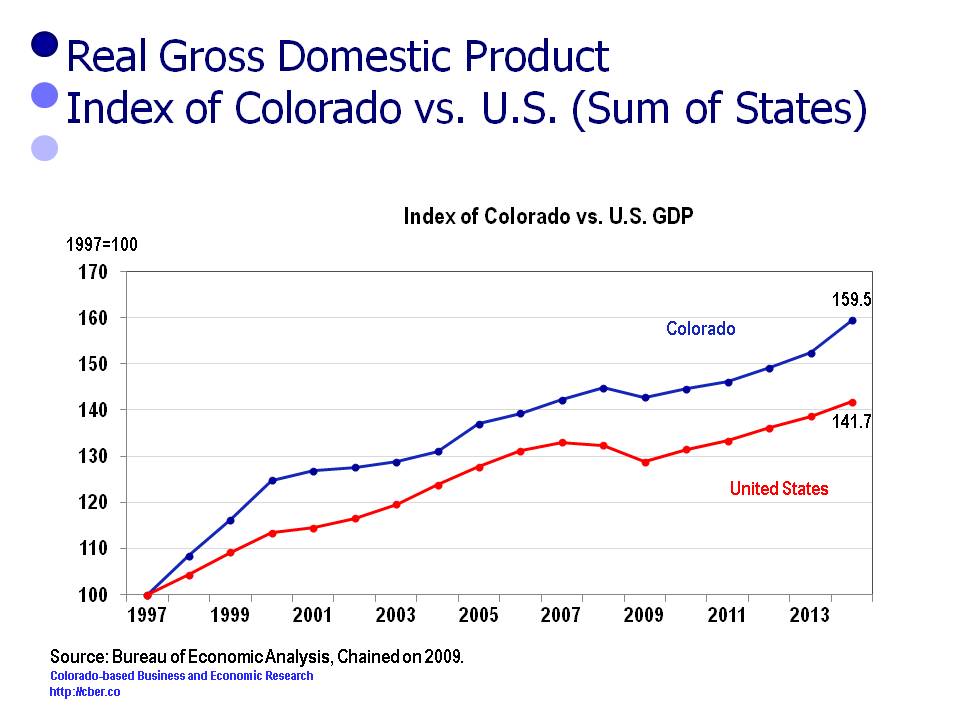On December 10th, the Bureau of Economic Analysis (BEA) released quarterly GDP data for Colorado (2005 to Q2 2015). The Q2 year-over-year Real GDP for Colorado increased by 4.8% compared to 2.7% for the U.S.
The following trends are evident in the comparison of the year-over-year GDP data for Colorado and the U.S:
• The correlation coefficient between these two variables is .69
• The U.S. was stronger during the period Q1 2006 through Q1 2007.
• Colorado outperformed the U.S. significantly between Q2 2007 and Q4 2009 (This was during the recession).
• The U.S. was stronger coming out of the recession for most of 2010 – from Q1 2010 to Q3 2010.
• For the next two years, from Q4 2010 to Q3 2012 the rates of growth for Colorado and the U.S. were similar.
• From Q4 2012 to the present, the Colorado GDP expanded at a faster rate than the U.S. GDP. Beginning in Q1 2014 the gap between the two rates became greater as a result of the strength of the oil and gas industry in Colorado.
• That gap has since narrowed in 2015 as the price of oil has declined and oil and gas production has fallen off.
The following trends are evident in the comparison of the year-over-year GDP data for Colorado and the Colorado wage and salary employment:
• The correlation coefficient between these two variables is .72
• Employment grew at a higher rate from Q1 2006 to Q2 2007 than the Real GDP.
• Generally, the Real GDP grew at a greater rate from Q3 2007 to Q2 2011 than employment growth.
• From Q3 2011 to Q1 2014 the rate of growth for employment was generally greater than the Real GDP growth.
• From Q2 2014 to present the Real GDP grew at a greater rate than employment. This was in part largely because of the increase in oil and gas production in Colorado during this period.
• As the price for a barrel has dropped and oil and gas production has fallen off the gap between the two rates has declined. This caused a much greater decline in the growth rate for GDP than employment.
As can be seen the growth of the Colorado Real GDP and the U.S. Real GDP are closely related. As well, there is a strong relationship between the rate of growth for state Real GDP and employment.



